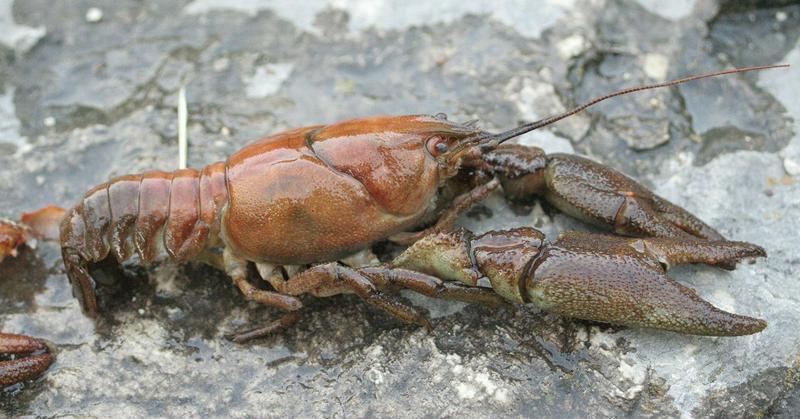These Escaped Mutant Crayfish Clones Have Overtaken A Belgian Cemetery
By | October 28, 2020

This may sound like a B-movie from the 1950s, but no, right here in 2020, mutant crayfish are wreaking havoc on a Belgian cemetery. They're threatening the biodiversity of the area, may eat their way out of the cemetery and into the surrounding town if they're not stopped, and seem to be breeding at an ungodly rate without need for a male. It's like Jurassic Park except much scarier because it's 100% more real.
Attack Of The Clones
Sadly, the crayfish's mutation didn't come from a green sludge or toxic goo but their exposure to various parts of the world. Similar to the slough crayfish found in Florida, these crayfish are parthenogenetic, which means they asexually reproduce identical female offspring. It's not entirely clear how the queen crayfish came to be, but it's most likely that she was born 25 years ago and began a birthing cycle that created a ton of crayfish clones, many of which are now terrorizing the Schoonselhof Cemetery in Belgium, which is home to 1,577 British commonwealth soldiers killed in World War II. Have some respect, queen crayfish.
Is it really that bad that a bunch of genetically mutated crayfish clones are running rampant around a cemetery? Yes. 100%. It's very bad. These nocturnal crayfish, which are about four inches long, only do two things: devour whatever flora they can find and make babies. As they eat their way across Belgium, buffet-style, they're also destroying the land. If there's a crayfish population surge, the entire ecosystem can be disrupted. It's a good thing that's exactly what's happening.

Where Did The Mutant Crayfish Come From?
No one's ever going to come forward and admit they wrought a crayfish apocalypse upon this Belgian cemetery, but experts have theories about where the crayfish came from. These freshwater crayfish are believed to have first been bred by German pet traders in the '90s, and at least one person who ended up with one of these bad boys (sorry, girls) must have gotten fed up with drowning in clones and set them loose in one of the country's canals. They were banned from the EU in 2014, but it's impossible to know if the crayfish alpha was already in Belgium because the whole clone thing renders DNA testing pointless.

What Do We Do With Them Now?
The best way to deal with an outbreak of anything this voracious and reproductive, be it zombies or crayfish, is to wipe it off the planet. A similar outbreak of mutant crayfish in Spain was resolved with mass poisoning, but it's illegal to use chemical-based treatments in Belgium. For the time being, it seems that the only way to get all of these Procambarus virginalis out of the country is to round them up and put them in a lab for further study, but that's easier said than done. You try to wrangle a cemetery full of slippery crustaceans, underwater, in the dark.
Why do they want them in a lab, aside from the obvious "mutant crayfish" thing? Scientists actually believe that the animal's adaptability could help them understand how cancerous tumors adapt to certain drugs and stick around in the human body. Since both the crayfish and tumors self-replicate, they're hoping that figuring out whatever causes this genetic mutation will be the key to determining how cancer cells reproduce.

